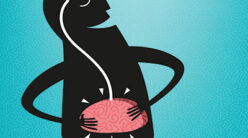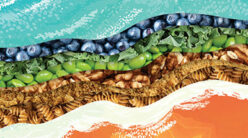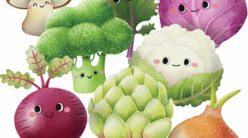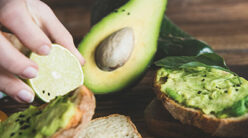When it comes to world-class athletes, there’s a proven principle: plants can fuel people through the most demanding sports on the planet. Consider ultramarthoner Scott Jurek, a vegan since 1999, who set a U.S. record in 2010 for running 165.7 miles in 24 hours. Primarily plant-powered Tour de France bicyclist, Dave Zabriskie, set the record for the fastest individual time trial in the Tour’s history, and has claimed multiple podium finishes at the World Time Trial Championships, as well as five wins at the National Time Trial Championships. A vegan since 2004, Mac Danzig is a tough-as-nails mixed martial arts competitor, under contract for the UFC (Ultimate Fighting Championship). Pat Neshek is a major league pitcher for the San Diego Padres, who tweets about his favorite vegan recipes. The list of no-meat athletes continues, including football great Tony Gonzalez of the Atlanta Falcons, bodybuilder Robert Cheeke, NBA guard Salim Stoudamire, hockey player Georges Laraque, and living-legend sprinter, Carl Lewis.

Another notable no-meat athlete is Brendan Brazier. A vegan since the age of 15, Brazier is a two-time Canadian 50K ultra marathon champion who competed in Ironman competitions professionally for seven years.
“People think being a vegan is a disadvantage somehow, but it’s the opposite. It’s an advantage, for athletes—and everyone else—to be able to feel good and perform well,” says Brazier, the author of the popular Thrive book series. Acknowledged as an authority on plant-based nutrition, Brazier is a Cornell University guest lecturer and host of a free online video and short-lesson course about plant-based diets called “Thrive in 30” (www.thrivein30.com). After spending hours each week concocting his own super-healthy food mixtures in his kitchen, Brazier launched Vega health food products, in part to conveniently provide himself with energy bars and smoothie mixes.
Record Recovery
“A vegan diet makes you healthy from the inside out. I train twice a day and compete in triathlons, fueled by vegetables, fruits, nuts, and seeds,” says Mary Stella Stabinsky, a Pennsylvania-based Ironman competitor and USA triathlete who blogs regularly about her training. “I believe a cleaner diet makes it easier for the body to recover.”
That’s what initially hooked Brazier, too. “With Ironman competitions, you combine a 2.4 mile swim, 112 miles of bicycling, and a marathon (26.2 miles of running). I looked at the training regimens of elite athletes, and found that they weren’t that different than [the regimens] of average athletes,” Brazier says. “The difference that caused some athletes to be in the upper-echelon was nutrition. Diet can account for up to 80 percent of the total recovery process. For me, nutrition was the difference in having a pro-career, or not.”
Recovery grows on trees for certified personal trainer, running coach, and the fifth-oldest woman to finish the 2010 Palm Beaches Marathon. At 58-years-young Ellen Jaffe Jones claims she is the only healthy person in her family. “I started running at 28 and almost always used to get an upper respiratory infection if I ran more than six miles. As part of my running coach certification, I learned about a suppressed immune system response that often happens when running distances of six miles or more. As a result, I’ve found that ramping up vitamin C sources with citrus or supplements and other immune-boosting foods are critical in the 72 hours after a long run or race,” says Jones, author of Eat Vegan on $4 a Day. “Interestingly, oranges are my favorite recovery food, and are often available at competitions,” she says. “And they seem to taste twice as good after a race!”
Plants Pay Off
Brazier calls certain foods “high net-gain nutrition,” because they are packed with nutrients and easily digestible. In addition to aiding an athlete’s recovery, these whole, raw foods are naturally alkalizing to the pH level of the body, once digested. “Alkaline-forming foods decrease inflammation, increase the body’s flexibility, provide energy, and improve sleep,” Brazier says. Alkaline-forming foods include cruciferous vegetables, sprouts and leafy greens, almonds, coconut, buckwheat, brown rice, a variety of fruit (such as citrus, melons, avocados, bananas, and apples), and seeds (including flax, hemp, and white chia). Brazier says that most people experience an improvement shortly after replacing a typical highly processed, acid-forming meal, based on meat and dairy, with just one alkaline-producing, nutrient-rich meal per day. “People notice that their dexterity improves. Muscles move more effortlessly, which translates to less strain on the heart and a lowered heart rate,” Brazier says. “These kinds of meals help people feel better and help them to lose excess weight.”
Eat Better, Eat Less, for More Energy
Brazier says another plus about a plant-based diet is a gain in energy. “Whether you’re an athlete or not, you want to feel that you have lots of energy, and be able to apply your energy to something you want to do. As an endurance athlete, the goal is to conserve your fuel, and burn less, because that’s more efficient.”
When you’re eating properly, Brazier explains, you’re not burning calories to digest food—which is a good thing, despite the message we hear so often, that we need to be concerned about revving up metabolism to burn calories.
With a plant-based diet, less is more. “Nutrient-dense foods, foods with micronutrients, turn off that hunger signal,” Brazier says. “When you’re getting what you need from foods like leafy greens that are high in antioxidants, phytochemicals, vitamins and minerals, then we stop feeling the need to eat constantly. Instead, you feel satisfied.”
Jones agrees. “I’ve been known to eat more than a serving of soy ice cream, or a handful of vegan chocolate chips. But that’s about it. If I have sweet cravings, I just make a smoothie with frozen bananas, fruit, and greens. I don’t like the way I feel if I don’t eat healthfully. And I love the way my body feels when I eat the plants it needs.”
Stabinsky says that she feels great, therefore it’s easy to stick with her eating plan. “I ‘treat,’ not ‘cheat,’” she says, “meaning, I don’t eat things that are not vegan, but I will occasionally indulge in a vegan dessert. It is not something I schedule or do regularly.”
As a personal trainer, Jones tells her clients and cooking class participants that it’s important to have protein, carbohydrate, and a small amount of healthy fat, such as seeds or nuts, at most meals. “Vegetables have fat. Vegetable oil is made from vegetables, so even if I don’t eat seeds or nuts at every meal, I don’t stress,” she says. “I find my body responds best during race season (September through June) eating adequate protein in the form of beans, or the protein-rich grain quinoa, as well as absorbable protein, calcium, and other nutrients in vegetables.” She doesn’t need to use protein supplements, except occasionally. “If I’ve run a hard race, sometimes I’ll add some protein powder to a greens and fruit smoothie as a recovery drink.”
Before a vigorous workout, Brazier often has dates, some coconut oil, and sometimes half an energy bar (see recipe on right). “Your body doesn’t have to break down the abundant glucose in dates, the liver can use the instant energy they provide. On their own, dates are good for 20 minutes of high-intensity activity, which is why it’s helpful to mix them with coconut oil, which has medium chain triglycerides also available for instant energy, almost like a carbohydrate.” He prefers nutrient-dense, simple carbohydrates smoothies with just a small amount of protein and a little fiber or fat. “A cold, liquid snack is easy to get down after exercise,” Brazier says. “An hour after your recovery snack, enjoy a complete meal.”
Going Green
“There’s a myth that you’ll miss key nutrients with a plant-based diet,” Brazier says. “But with high net-gain nutrition, the truth is that calcium, iron, and B12 are generally more bio-available to your body, more absorbable, than from animal sources.” Brazier’s diet is rich in foods such as spinach and other leafy greens, legumes, sprouted seeds, almonds, quinoa, miso, nutritional yeast, tahini (sesame seed paste), and a freshwater algae called chlorella.
There’s also a clinical way to evaluate where you are. “Because I push the envelope with running and have an ugly family history, I do get annual blood tests to make sure my B12, Vitamin D, and lipids are optimal,” says Jones. “Listen to your body. If you don’t feel energized in the morning heading out the door, you may need more calories or specific nutrients that only blood tests can identify.”
Award-winning freelance writer Michele Deppe has a passion for reporting on health and wellness topics. She and her artist husband, Tod, make their home in Seattle, Washington.






